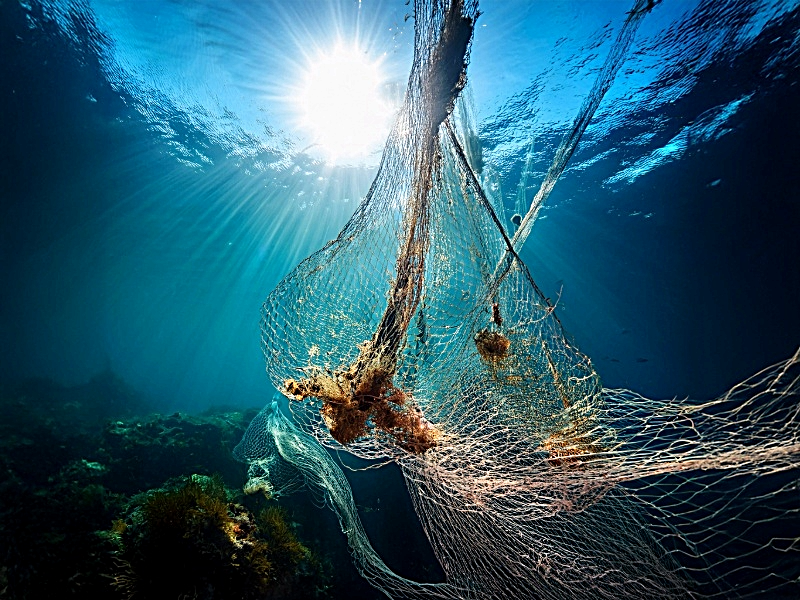Ghost Nets: Oceans Silent Killers. Presented by Clean Coastal

Ghost Nets: The Ocean's Silent Killers
Environmental Impact • Marine Conservation • Ocean Health
Let's talk about ghost nets—because if there's anything more haunting than a plastic bottle bobbing in the surf, it's the abandoned fishing gear drifting just beneath the surface, invisible and deadly. Ghost nets are the undead of the ocean: lost, dumped, or discarded fishing gear that never stops doing what it was designed to do—trap and kill. Only now, it's not feeding anyone. It's just quietly wrecking ecosystems, choking marine life, and turning our oceans into underwater graveyards.
These synthetic killers—made mostly from non-biodegradable nylon or polypropylene—don't go away. According to the Farm and Agriculture Organization and UNEP, we lose about 640,000 tons of ghost gear each year, and that number may actually be closer to a million if you count all the fishing-related debris entering the ocean annually. That's a small mountain of nets, lines, and traps left to drift through the world's waters like silent wrecking balls. They account for roughly 10% of all marine debris, and a staggering 46% of the Great Pacific Garbage Patch by weight. That's not a typo. Nearly half.
What makes ghost nets especially brutal is that they kill by design. These aren't passive pieces of trash—they actively continue to "ghost fish," capturing fish, turtles, sharks, seabirds, and even divers. Once something is caught, it often dies, decomposes, and lures in more life—restarting the deadly cycle. Estimates say ghost nets kill up to 650,000 marine animals each year, and that's just the stuff we can see. They also tear up coral reefs, smother seagrass beds, and create underwater wastelands.
Take a trip around the globe, and you'll find the wreckage. In South Korea, 40,000 tons of gillnets go missing annually. In the North-East Atlantic, it's about 25,000 nets—or 1,250 km worth—every year. One tagged net drifted over 4,700 km from Maine to Cornwall. In Colombia, divers have rescued whales from entanglement and recovered over 700 kg of ghost gear just in the Gulf of Tribugá. Costa Rica recently pulled 15 tons of nets off the seafloor near Puntarenas. And in India, NGOs have yanked 26 tons of nets from the Bay of Bengal, helping boost local fish stocks and fishermen's incomes.
In Germany, World Wildlife Fund partnered with Microsoft's AI for Good Lab to create GhostNetZero.ai, using sonar data to map ghost net hotspots. In Australia, the government has poured over $3 million into 11 ghost net cleanup projects. Across Asia, volunteer divers are hauling up net loads near Phuket, Thailand—and then recycling the gear into wearable goods or diving equipment. Colombia's Guardianes del Mar are literally risking their lives cutting whales and coral reefs free from this junk, sometimes diving in dangerous waters to do so.
Initiatives like Healthy Seas and Net-Works are turning retrieved gear into carpets, swimsuits, and sunglasses. In Colombia, recovered nets become bracelets and dive weights. These aren't just creative reuse ideas—they're part of a system designed to pull ocean waste out of circulation for good.
"If we can trace a bottle cap, we can damn well track a 200-meter gillnet."
Still, innovation isn't enough without accountability. That's why international pressure is mounting for a UN plastics treaty that includes mandatory gear tracking and producer responsibility. Licensing should come with takeback obligations: register your gear, bring it back, or face penalties. It's not radical—it's overdue.
Ghost nets may be out of sight for most of us, but their impact is undeniable. The good news? We can do something about it. The technology exists, people are mobilized, and the solutions are gaining momentum.
So the next time you spot an old rope or net on the sand, don't just walk by. It might be part of something far more dangerous. Paying attention is the first step. Taking action is the next.
For more shoreline awareness, beach of the week travel inspiration, gear tips, and sustainability hacks, follow us on Instagram @Clean-Coastal. Or get it straight in your inbox by subscribing to the Shoreline newsletter.
No more drifting. No more killing. Let's cut ghost nets loose—permanently.













